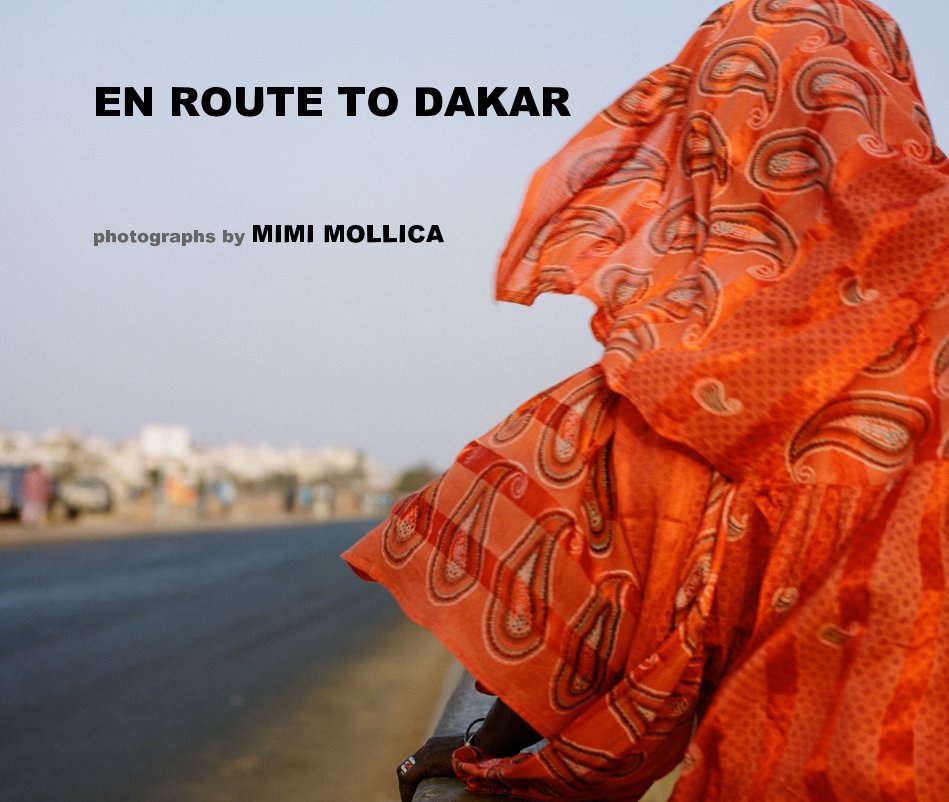EN ROUTE TO DAKAR
by photographs by MIMI MOLLICA
This is the price your customers see. Edit list price
About the Book
It is not always acknowledged that development is a disruptive, sometimes irrational, process. My portrait of a changing Dakar spotlights these aspects. My pictures document a disquieting scenery where the urban sprawl advances relentlessly, offering variegated combinations of cement, laterite and people involved in an intense socio-economic transition. This transition includes a new highway that rips though the centre of Dakar and leads to Senegalese hinterland where a thirsty countryside spreads as far as the eye can see.
In Senegal, this difficult task has the texture of concrete and the smell of smoky asphalt struggling to conquer the sand. At present only the first seven kilometres have been almost completed while the remaining twenty-five together with new roundabouts, interchanges, viaducts and bridges should be ready in 2011. The engineer of this vast infrastructure is a ‘slimmed-down’ state that is still trying to pursue a 1960s development dream.
Dakar is now a huge, surreal building site. The Senegalese relate to the new road, and its promises, in many ways. Basically, they adjust to it by seeking their space in a changing environment. While some people have directly occupied the new space, others reinvent a daily living at its margins. Finally, while all around people bargain, build, chat, do the laundry, have a rest, play, run, walk, wait, some also find a sandy corner to unroll their small carpet and engage in the five-minutes dialog with God.
Although “development” is generally referred to as a positive step forward towards “civilization”, disruption and insecurity characterise the capital as it undergoes this transition.
What my portrait suggests is at the very centre an open question: are the inhabitants being crushed and swept away by this complex transition or are they slowly taking possession of the new space?
In Senegal, this difficult task has the texture of concrete and the smell of smoky asphalt struggling to conquer the sand. At present only the first seven kilometres have been almost completed while the remaining twenty-five together with new roundabouts, interchanges, viaducts and bridges should be ready in 2011. The engineer of this vast infrastructure is a ‘slimmed-down’ state that is still trying to pursue a 1960s development dream.
Dakar is now a huge, surreal building site. The Senegalese relate to the new road, and its promises, in many ways. Basically, they adjust to it by seeking their space in a changing environment. While some people have directly occupied the new space, others reinvent a daily living at its margins. Finally, while all around people bargain, build, chat, do the laundry, have a rest, play, run, walk, wait, some also find a sandy corner to unroll their small carpet and engage in the five-minutes dialog with God.
Although “development” is generally referred to as a positive step forward towards “civilization”, disruption and insecurity characterise the capital as it undergoes this transition.
What my portrait suggests is at the very centre an open question: are the inhabitants being crushed and swept away by this complex transition or are they slowly taking possession of the new space?
Features & Details
- Primary Category: Arts & Photography Books
-
Project Option: Large Format Landscape, 13×11 in, 33×28 cm
# of Pages: 78 - Publish Date: Jul 05, 2010
See More

